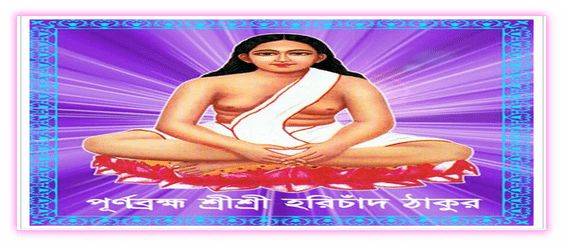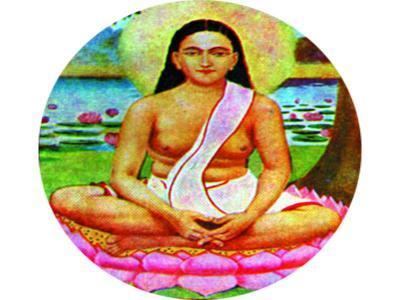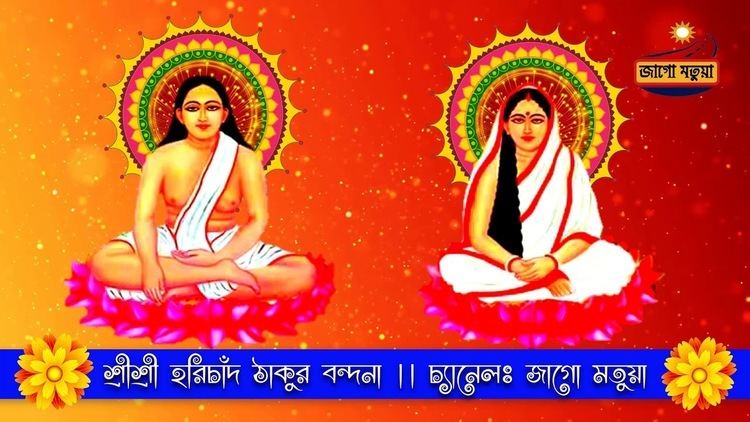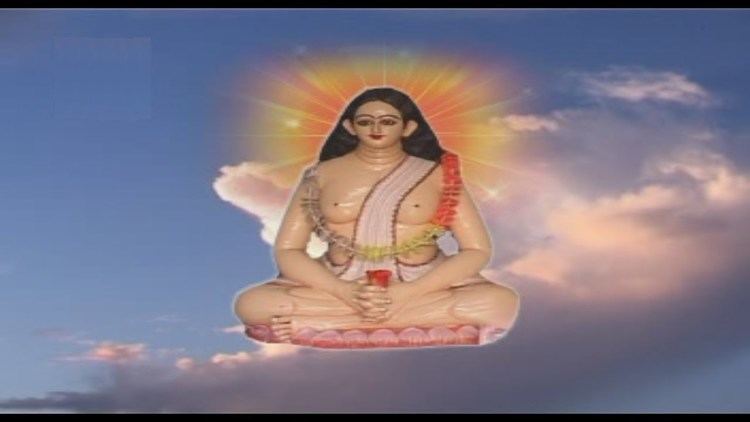Name Sri Harichand | ||
 | ||
Born 11 March 1812 (age 65) Died 5 March 1878 (aged 65) | ||
Harichand Thakur, sometimes known as Sri Sri Harichand Thakur, (ca. 1812-1878) worked among the untouchable people of Bengal Presidency, who considered him to be a god.
Contents

Sri sri harichand thakur sridham thakurnagar matua mela 2013
Life

Harichand Thakur is variously said to have been born in 1811 and 1812. His family were peasant farmers of the Namasudra(Namassej) community and he was born in the Gopalganj area of what was then Bengal Presidency (now a part of Bangladesh). Named Haricharan Bairagi at birth, he moved to Orakandi, Faridpur District.

At a very early age, Thakur accepted the path of religious reformation for giving service to and uplifting the untouchable people of Bengal. He experienced atmadarshan (self-realisation) and preached his ideologies and religious philosophy in twelve commandments and asked his followers to pursue his works.

Thakur, whose family were Vaishnavite Hindus, founded a sect of Vaishnavite Hinduism called Matua. This was adopted by members of the Namasudra community, who were then also known by the pejorative name of Chandalas and considered to be untouchable. The sect was opposed to Brahmanical Hinduism and, according to Sipra Mukherjee "[inspired] the community towards education and social upliftment". It has subsequently attracted adherents from other caste communities that were marginalised by the upper castes, including the Chamars, Mahishyas, Malis, and Telis.

Thakur's followers consider him as God (hence calling him Thakur) Harichand and as an avatar (incarnation) of Vishnu or Krishna. Thus, he became known as Sri Sri Harichand Thakur. However, adherents of mainstream Hinduism do not accept this, despite often assimilating offshoots of their faith, because, according to the Dalit activist Debendralal Biswas Thakur, to do so in this instance would be to undermine the basis of their religion.

Thakur was married to Jagat Mata Shanti Mata and they had two sons. He died at Orakandi in 1878.
Legacy

After his death, one of his sons, Guruchand Thakur (b. 1846), worked with C. S. Mead in a campaign to have the Chandala people recategorised as Namasudra. According to historian Sekhar Bandyopadhyay, it was under the leadership of Guruchand that the Matua sect "achieved its doctrinal cohesion and organisational push, as it came to be associated with the Namasudra social protest movement started in 1872".
A considerable body of Dalit literature that mixes religious and secular themes has emerged around Thakur and Matua. This includes biographies, promotions of the teachings and interpretations of the relationship to later events, such as the thoughts of B. R. Ambedkar and comparisons with the situation of black people in the US.
